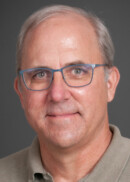
Title(s): Professor
Department: Occupational and Environmental Health
Office: S320 CPHB
Phone: (319) 335-4202
Courses Taught
- OEH:6420 Methods in Exposure Science
- CPH:2220 Building a Healthier Tomorrow
- OEH:6432 Assessing Non-Ionizing Radiation
- OEH:4240 Global Environmental Health
- CEE:4159 Air Pollution Control Technology
Research Interests
- Industrial hygiene exposure assessment
- Respirator theory and testing
- Ambient air assessment and modeling
- Microplastic toxicity
Background
Affiliations
- Director, Heartland Center for Occupational Health and Safety
- Director, Exposure Science Facility, Environmental Health Sciences Research Center
- Exposure Generation Specialist, Pulmonary Toxicology Facility, Environmental Health Sciences Research Center
In the News
- O’Shaughnessy comments on air quality alerts for Iowa
- O’Shaughnessy discusses dust from gravel roads and respiratory health
- Meet our faculty: Patrick O’Shaughnessy
- CPH professors discuss health effects of extreme heat
- UI experts offer guidance on best masks for protecting against COVID-19
- Supporting Safer Workplaces
- Study evaluates performance of 3D-printed face masks
- Iowa researchers collaborate on testing 3D-printed respirators
- Unique UI collaborations helping extend use, decontaminate PPE
- O’Shaughnessy lending skills to a variety of projects evaluating PPE safety
- VIDEO: Heartland Center prepares students to protect worker health
- O’Shaughnessy comments on health effects of particulate pollution
- UI awarded $8.8 million grant for occupational health and safety training center
- Residents seek answers about health risks near Iowa sand mines
- O’Shaughnessy discusses bicycle safety
- O’Shaughnessy cited in story on frac sand mining
- O’Shaughnessy comments on sand mine health risks
- O’Shaughnessy Discusses Iowa’s Air Quality